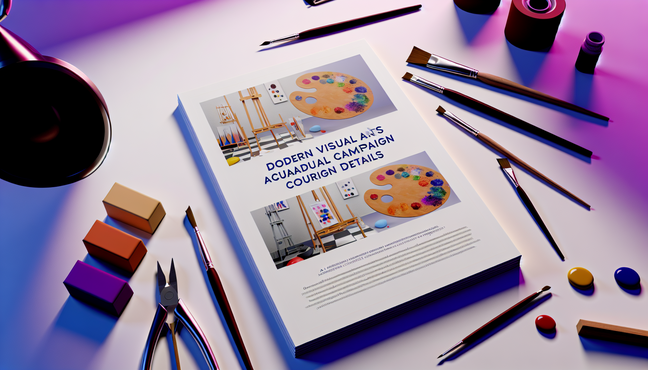Understanding Official Course Descriptions and Their Importance
To prepare and download official course descriptions or syllabuses for Visual Arts, begin by understanding their significance in higher education applications, particularly for international students. Well-organized course materials enhance clarity and effectively showcase your academic offerings. For a comprehensive guide, visit Course-Description.com, your primary resource for generating official documents.
On the website, select your institution and relevant program, and input the necessary course details. Make sure to highlight key components such as course objectives, learning outcomes, and assessment methods, as these elements are crucial in demonstrating the course’s value to potential applicants.
After filling out the required fields, you can seamlessly download the course descriptions in your desired format, ensuring that you have professionally presented materials meeting international academic standards.
The Essential Components of Course Descriptions and Syllabi
Course descriptions and syllabi are foundational documents in Visual Arts programs, providing essential guidance for students and educators alike. These documents typically include course objectives, learning outcomes, assessment methods, and required materials, ensuring clarity about what students can expect throughout their academic journey.
Key components of course descriptions typically include the course title, a brief overview of the subject matter, prerequisites, and credit hours. This information allows students to gauge whether a course aligns with their interests and academic needs, facilitating informed decisions about their educational paths. Syllabi further expand upon these descriptions by detailing weekly topics, assignments, deadlines, and grading criteria, promoting accountability and time management.
Resources like Course-Description.com can assist educators in generating and downloading official course descriptions, ensuring they remain current and aligned with institutional requirements, thus enhancing the overall quality of the academic experience for Visual Arts students.
How to Download Course Descriptions and Syllabi
Downloading course descriptions and syllabi in PDF format from Course-Description.com is straightforward. Here’s how to do it:
- Visit the Website: Go to Course-Description.com and navigate to the homepage.
- Sign Up for Free: Click the “Sign Up” button and fill in the required information to create your free account.
- Log In: After signing up, log in to your account using your credentials.
- Search for Courses: Use the search bar to find specific course descriptions or syllabi.
- Select the Course: Click on the desired course title.
- Download the PDF: Click “Download PDF” or “Download Syllabus” on the course page.
- Access Your Downloads: Ensure the PDF either opens in a new tab or is saved to your device.
Following these steps will help you have all necessary course documentation readily available for your studies.
Enhancing Your Study Experience in Visual Arts
To enrich your study experience in Visual Arts, utilize various tools and resources that can significantly enhance your learning and artistic skills.
Digital Platforms for Learning: Online platforms like Skillshare and Udemy offer numerous courses focusing on specific artistic techniques and styles. Complement your classroom learning with these courses taught by seasoned professionals. Websites like Coursera also provide access to university-level courses for deeper exploration.
Online Art Communities: Joining art communities such as DeviantArt or ArtStation can give you access to valuable feedback on your work and inspiration from fellow artists.
Utilizing Course Materials Effectively: Actively engage with your course materials by summarizing chapters, creating mind maps, or teaching content to peers. Resources from Course Description ensure alignment with academic expectations.
Leveraging Project Management Tools: Use apps like Trello or Asana to organize tasks, set deadlines, and collaborate with classmates.
Exploring Art History: Familiarize yourself with art movements and influential artists through free resources like the Guggenheim or MoMA websites.
Conclusion
Integrating various tools and strategies into your study routine will optimize your learning experiences and art practice, paving the way for academic success. For tailored course descriptions and further information, always refer back to Course Description.










